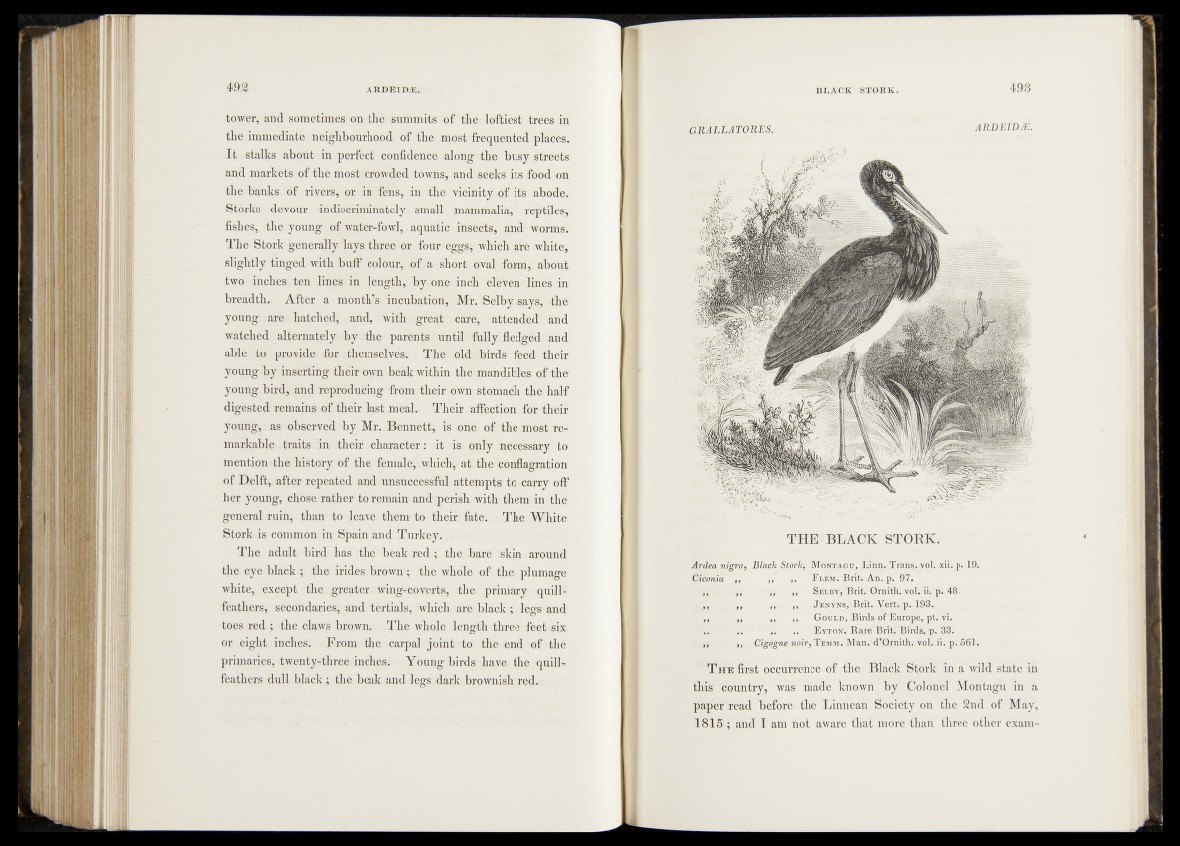
tower, and sometimes on thé" summits of tie-loftiest trees in
the immediate neighbourhood of the most frequented places.
I t stalks about in perfect confidence-along the busy streets
and markets of the most.crowded towns, and-seeks its food on
the banks of rivers,, or in fens, in $jbe vicinityaq£ its abode.
Storks devour indiscriminately small mammalia^ reptiles,
fishes, the young of water-fowl, aquatic insects, and worms.
The Stork generally, lays three or four eggs, which- are white,
slightly tinged with buff colour, of a short ' oval - form, about
two inches, ten lines-in length, .by one inch eleven liiës in
breadth. After a month’s incubation, Mr. Selby isays, the
young are hatched, and, . with great care, attended and
watched alternately by :the parents g until fully fledged' and
able to provide for themselves.. The old birds feed their
young-by inserting theifpwn beak within thé mandibles of the*
young bird, and reproducing from their own stomach the half
digested remains of their last meal. Their affection for theit
young, as observed by Mr. Bennett, is one of the most remarkable
traits in theif character; it is only necessary to
mention the history of the. female^.;which, at the conflagration
of Delft, after repeated and unsuccessful attempts to carry off
her young, chose rather to remain and perish with them in the
general ruin, than to leave them to theit fate. The White
Stork is common in Spain and Turkiyaö
The adult bird has the beak r e d ; the bare skin around
the eye black ; the irides brown; the whole of the plumage
white, except the greater wing-coverts, the primary quill-
feathers, secondaries, and tertials, which are black; legs and
toes red ; the claws brown. Thé whole length three feet six
or eight inches. From the carpal joint to the end of the
primaries, twenty-three inches. Young birds have the quill-
feathers dull, black; thé beak and legs" dark brownish red.
GRALLATORES.
T H E BLACK STORK.
ARDEIDÆ.
Ardea nigra} Black Stopk, Montagu, JLinn. Trans, vol. xii. p. 19.
Ciconia „ ,, „ Flem. Brit. An. p. 97.
,«Bh k > ï,; " ,, „• • Selby, BiSt.-OfniltetlftM. p. 48.
ft*. & •: Jen,yW| .Br i t . , p . , 193.
’ M ,, Birds of Europe, pt. v i , .
' ,, • - . „ Ê v r i^ Rare Brit. Birds, p iW .
. .-,i ,, Cigogne noifa Temm, Mari. d’0rnitb«' voî. 8, pi 561.
T he first occurrence of the Black Stork in a wild state in
this country, was hjade known by Colonel Montagu in a
paper read before the Linnean Society on the 2nd of May,
1815 ; and I am not aware that more than three other exam